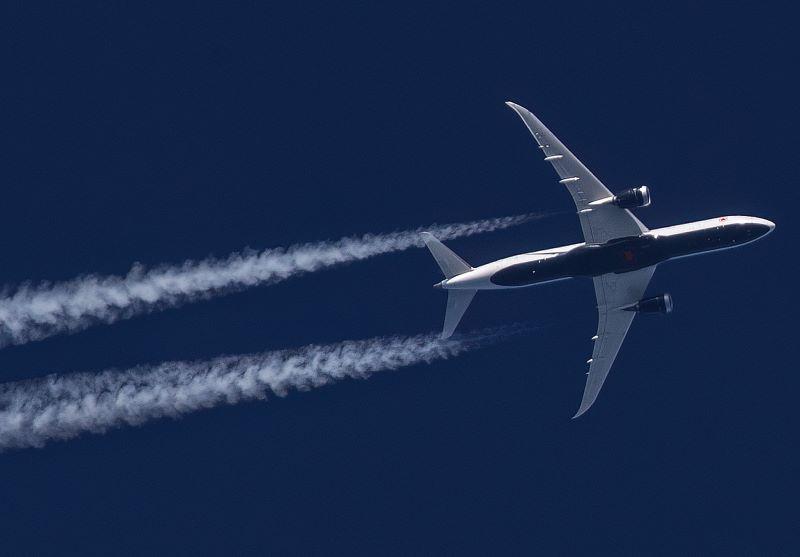
The International Civil Aviation Organization (ICAO) and Google, which each have their own emissions assessment tools, are exploring ways to cooperate on their respective methodologies.
On Dec. 9, ICAO and Google announced that they will start sharing expertise on how they calculate aviation emissions to improve their own modeling and create more reliable data for passengers and shippers.
“Currently, a wide range of independently produced aviation carbon calculators provide very diverse emissions estimate results for a given aircraft and flight,” ICAO secretary general Juan Carlos Salazar said. “This is largely due to different sets of data being employed, simplifications in the related methodologies, and scientific uncertainty.”
ICAO’s Carbon Emissions Calculator is approved by aviation regulators, and is used by consumers, business, governments, international organizations, non-profit organizations, and UN organizations. Meanwhile, Google’s free open-source Travel Impact Model (TIM) estimates emissions at individual passenger level, using public and licensable external data, including flight origin and destination, aircraft type, cabin class, seat configuration, load factor, and average aircraft utilization.
Google’s Emissions Calculator
Google’s Travel Impact Model (TIM) is the technology used to estimate emissions on Google Flight searches, and it has also been adopted by Travalyst—a non-profit sustainable travel coalition that was formed by Prince Harry in 2019. Travalyst’s members include Amadeus, Booking.com, Expedia Group, Google, Skyscanner, Travelport, Trip.com Group, Tripadvisor, and Visa. Travalyst’s aim is to make the environmental impact of flying more transparent.
“We’re very confident that ICAO and Google’s collaboration will provide greater integrity and consistency in reported greenhouse gasses inventories, and more accurate carbon footprint estimations,” Google head of travel sustainability and transport partnerships Sebnem Erzan said.
Google also recently formed a cooperation with the International Council on Clean Transportation (ICCT)—a research-based environmental non-profit organization—with the aim of developing TIM as a standard for consumer emissions disclosures.
Speaking at the recent Aviation Carbon conference in London, ICCT Program Director, aviation and marine, Dan Rutherford said research has shown “material differences” in carbon intensity across airlines and individual flights. “Getting that data directly in the hands of consumers can be an important way to contribute to our common goal of reaching net zero emissions by 2050,” he said.
An independent advisory committee was formed for TIM in July, comprising scientific research bodies, a sustainability NGO, Travalyst’s CEO, and representatives from American Airlines, easyJet, Lufthansa, the European Union Aviation Safety Agency (EASA), and the U.S. FAA. Rutherford said this panel has met three times and formed a two-year work plan of specific research topics to refine the model. The work will focus on seven principles: accuracy, precision, comprehensiveness, future-proofing, transparency, consistency and accessibility.
Accurately measuring CO2 emissions has become increasingly pressing, as corporates, passengers, and regulators seek more detailed breakdowns of their carbon footprint. According to IATA data, 90% of travelers felt they should be aware of their flight emissions, but only two in five sought this data. The vast majority expect airlines or travel agents to provide them with this information.
Industry Response
However, this quest for numbers has spurred various initiatives and a wide range of methodologies. And, historically, IATA Director General Willie Walsh voiced skepticism about the accuracy of external carbon calculators, because different calculation standards made it hard to perform accurate comparisons. “Most, if not all of them, that I’ve looked at are wrong,” Walsh said back in 2021. This led IATA to develop its own model, called CO2 Connect.
Responding to the ICAO-Google cooperation, an IATA spokesperson said accuracy and consistency is a key issue, and the methodology alignment between Google and ICAO is “a good thing.” However, IATA also noted that the Google and ICAO methodologies use modeled data, whereas the CO2 Connect calculator uses “primary and actual airline data.”
The spokesperson also noted that IATA has a strategic collaboration agreement with Travalyst (of which Google is a member) and is part of the ICAO calculator expert group, supporting efforts for closer alignment.
European Eco-Labeling
Meanwhile, Europe is developing an environmental labeling scheme for flights to give passengers standardized transparent information about the environmental impact of their flights. The label is expected to take effect from January 2025.
EASA will hold its first workshop on the labeling scheme, which forms part of ReFuelEU Aviation legislation, on Jan. 22-23, 2024, in Cologne, Germany. Airlines, industry associations, and online travel agents will be among the participants.
“The aim is to exchange on the status, the methodology, data ingestion and treatment, as well as the integration of the labeling into the ecosystem of emissions communication,” EASA said.
While the specifics of the label are yet to be finalized, EASA said the main criteria is likely to be carbon emissions per passenger-kilometer, factoring in aircraft type, flight distance, and load factor. It may also incorporate airline environmental practices, such as noise pollution, waste management, and investments in more efficient aircraft.
